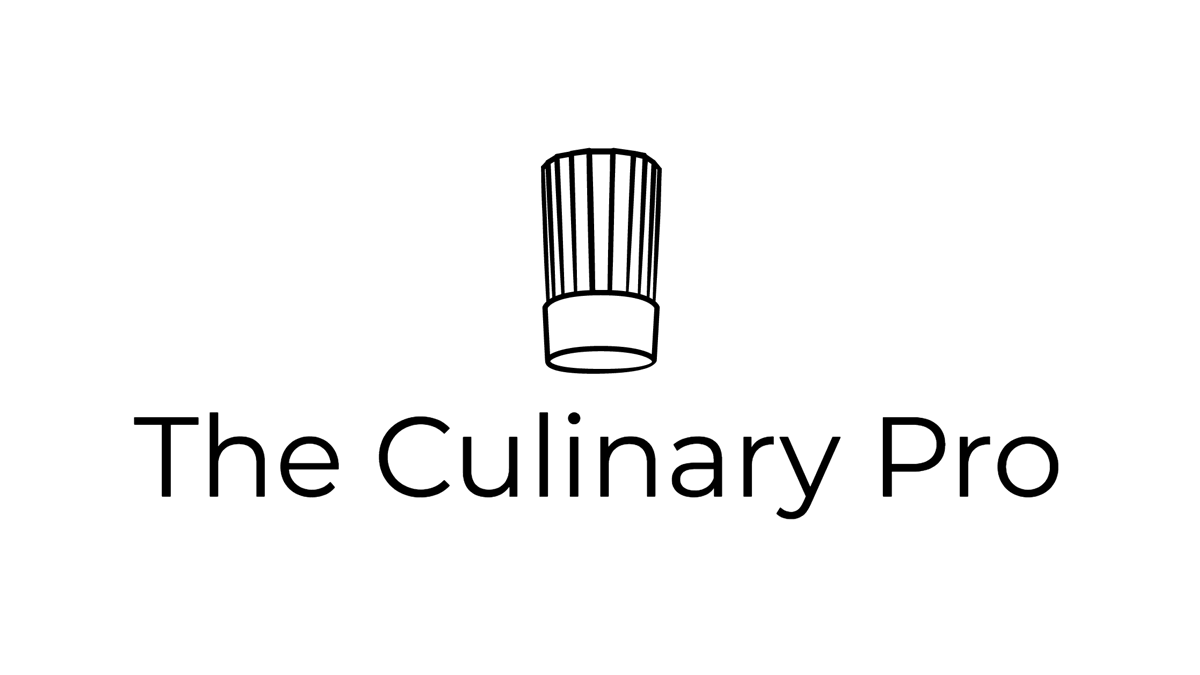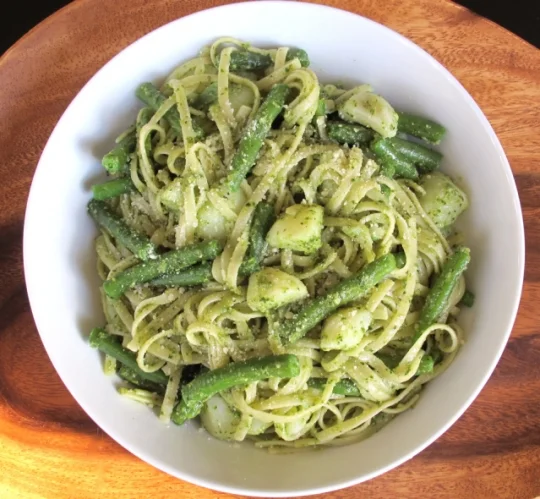Tales from Italy:
Secrets of the True Ligurian Pesto
From Chef Elissa Franke
Trenette al Pesto
Pesto comes from the Italian verb “pestare” which means to pound or to beat. Thus many years ago before blenders and food processors, pesto was made using a marble mortar and a wooden pestle by hand. This was a long and tedious job but utilized the abundance of summer basil. If stored properly it kept for many months without refrigeration. In fact the sailors in Genova and other parts of Liguria took it with them to sea as one of their staple foods.
Pesto can also be made from a combination of herbs, or in Sicily, the city of Trapani, it is made from a combination of almonds, tomatoes, garlic, parmigiano and bread crumbs. The pesto we know and love is the Ligurian version used to make pasta al pesto. The best pairing of pasta for pesto Genovese is either trenette (our linguine) or trofie, a twisted, spiral shaped pasta born in Liguria.
Essential in the success of this delicious sauce besides the freshest basil is a good quantity of parmigiano reggiano cheese, pine nuts, fresh garlic and the best extra virgin olive oil. In Italy we use the term q.b. which translates from the Latin quanto basta or as much as needed! With pesto you can be free in using ingredients such as parmigiano, garlic, or olive oil. Here the recipe for Trenette al Pesto given to me by a dear friend from Genova.
Trenette al Pesto
Ingredients
2-2 1/2 oz./60 to 70 g trenette or linguine per person
1 large potato, peeled and sliced about 1/2-3/4 inch thick
3 1/2 oz./100 g green beans, not too fat
Butter as needed
Pesto: (see detailed recipe below)
4 bunches fresh basil
2 garlic cloves
1/4 C pine nuts kernels
salt to taste
2 1/2 oz. 80 ml olive oil
10 TB. Parmigiano Reggiano, more as needed
PESTO PREPARATION
- Wash the basil leaves in cold water, dry them on a tea towel being careful not to rub the leaves or they will turn black.
- Blend the pine nuts and the garlic in a food processor with a little oil to start with. When smooth, with the machine running, add, little by little, the basil leaves together with the salt (remember that parmigiano is salty so not too much) and the olive oil. Then add the cheese and blend well all the ingredients.
- Set aside. The preparation must be done quickly to avoid oxidation.
Pasta Preparation
- In a large pan, bring salted water to the boil and add the sliced potato.
- Bring to the boil then add the green beans and bring back to the boil again, then pour in the trenette. Drain when the pasta is “al dente”.
- In a large serving bowl prepare the pesto with a small quantity of butter and by adding some of the boiling water to obtain a smooth, creamy sauce. Then add the pasta, potatoes and green beans. Mix well and serve immediately
NOTES
- Store pesto covered with a film of olive oil, in a glass jar. May be kept in the refrigerator for 1 day or in the freezer 6 months.
- As I mentioned earlier a marble mortar and the wooden pestle were the traditional tools to make “pesto”. Nowadays we all use a blender or food processor.
Chef Elissa divides her time between Italy and the US
"A vacation to Italy in 1994 made me fall in love with the lifestyle, the food and wine and most important ,the people. I have taught cooking classes in Tuscany with 3 other Italian woman for the last 15 years. "


